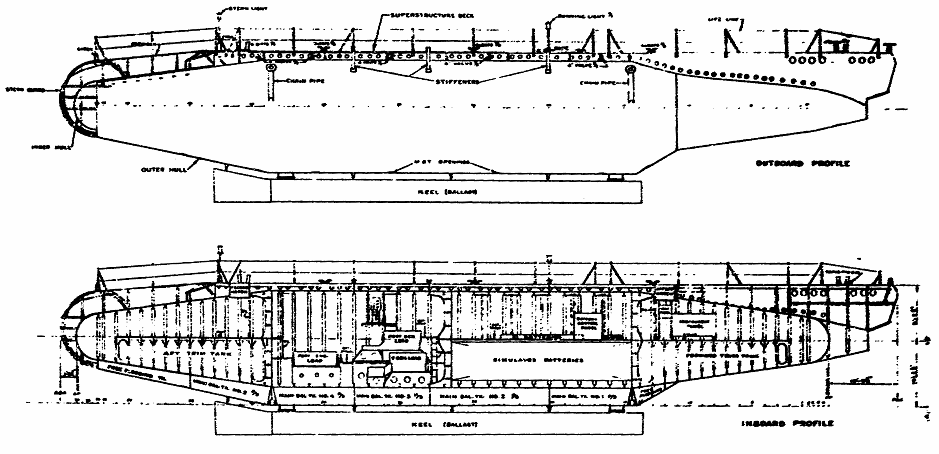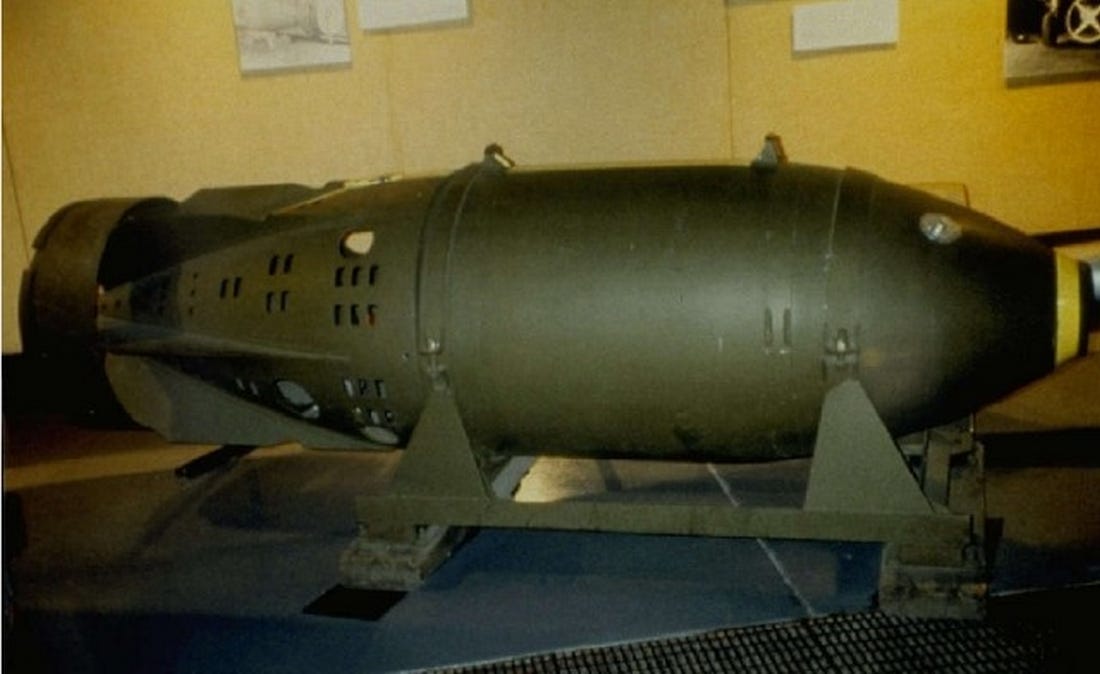1955's Operation Wigwam tested an atomic depth charge
Can you kill a sub with a nuke?
It seems pretty obvious that a nuclear explosion deep in the ocean should sink a submarine, but you need to be sure if you’re gearing up for World War III. During the heyday of nuclear testing in the 1950s, the U.S. Navy made sure of its underwater atomic might with an elaborate and very loud test.
Sailors and scientists needed to know the range and lethality of underwater nuclear explosions. Would they harm the crews, ships and planes delivering the weapons? Would the ocean become too contaminated near the blast for forces to remain and fight?
The oddly-named Operation Wigwam tried to answer those questions. It required more than a year of preparation.
Navy scientists and oceanographers from the Scripps Institue of Oceanography chose a target site in the deep Pacific Ocean some 500 miles southwest of San Diego. There the ocean is more than three miles deep, far from shipping lanes and notably lacking in marine life. Reports called it a “biological desert.”
A site 500 miles offshore from Southern California put the test far enough away from population centers and fisheries for safety and close enough to get Navy assets in place from shore bases.
 At right—a schematic of the Wigwam tubs. U.S. Navy art. At top—a 1962 nuclear depth charge test. Photo via Wikipedia
At right—a schematic of the Wigwam tubs. U.S. Navy art. At top—a 1962 nuclear depth charge test. Photo via Wikipedia
Tubs for subs
Surplus real subs weren’t cheap enough or pristine enough to use as instrumented targets, so the Long Beach Naval Shipyard built three identical 4/5-scale sub hulls to hold instruments while submerged.
In keeping with the operation’s naming theme, the testers nicknamed the instrument subs for Native American women, using terms that aren’t very polite. We’ll refer to them as “tubs.”
The tubs were a little more than 140 feet long and 20 feet in beam, painted white and stiffened with internal bulkheads. Weights designed to simulated engines and other fittings sat inside compartments equipped with cameras and instruments.
The tubs contained ballast systems that the testers on a support barge operated through thick high-pressure hoses. The tubs could sink or rise just like real subs.
The support barge also carried semi trailers full of gear from labs around the country. Instruments aboard the barge recorded readings from the tubs’ on-board gauges and sensors as well as data on radiation, sea states and water quality.
The test instrumentation array formed the Navy’s longest-ever towed assembly. The column of cables, barges, floats and tubs stretched almost six miles behind the fleet tug USS Tawasa. Sea trials off San Clemente Island went off without a hitch.
A sizable task force of 30 ships including amphibious vessels, the aircraft carrier USS Wright and a command ship accompanied the towed array to the test site.
Wigwam’s nuclear device was a Mk-90 “Betty” atomic depth charge. The Betty yielded 30 kilotons, twice the force of the Hiroshima bomb. Shorn of its fins and other equipment, the nuke depth charge sat in a specially-built steel pressure housing suspended 2,000 feet below the shot barge.
The tubs were supposed to float 260 to 290 feet below the surface between one and two-and-a-half miles from the bomb. Giant salvage floats supported the tubs at depth using huge chains. Testers evacuated the support barge before the test.
By the day of the test—May 14, 1955—the Pacific was anything but peaceful. Twenty-knot winds and 15-foot seas twisted the carefully-planned line of barges and tubs into a writhing snake.
Submerging the tubs proved far more difficult than during previous trials. One tub couldn’t sink due to mechanical problems. The engineers reconfigured it as a surface target.
As H-Hour approached, the task force put five miles’ distance between themselves and the array. Only two converted Liberty ships—set up to monitor radiation and test decontamination measures—remained near the shot point. Their crews hunkered down in heavily shielded compartments to await the blast.
 Mk-90 Betty nuclear depth charge. Photo via Nuclearweaponsarchive.org
Mk-90 Betty nuclear depth charge. Photo via Nuclearweaponsarchive.org
Boom, burst and bubble
The Betty’s detonation produced a huge “hot” bubble more than 375 feet across. The enormous pressure at 2,000 feet of depth kept it from growing bigger. The hot bubble broke the sea surface a few seconds after the initial blast—and created a towering 800-foot high plume of radioactive seawater.
The surface disturbance stretched nearly a mile across. The support barge a mile away bobbed in a 40-foot surge. The shockwave created instant pressure clouds above above the plume and bounced off the ocean bottom miles below.
The unevenness of the sea bottom below the explosion caused unusual reflections. A ship five miles from the blast experienced effects that scientists expected to occur much closer to the shot.
Navy hydrophones in Point Sur—nearly 1,000 miles north of the blast—quickly picked up its sound. The explosion produced so much undersea noise that the Point Sur station soon detected echos of its sound from the Hawaiian Islands … 2,500 miles away.
A Greek freighter approaching San Francisco got badly shook up, radioed reports of an earthquake and stood by to render assistance if the city needed help. We can only imagine what marine life made of such a noise. The bang might have deafened every whale in the Pacific.
Half an hour after the shot, radioactive contamination spread across five square miles of ocean. Radiation at the surface measured 250 REMs, enough to maim or kill.
Within 24 hours the radioactive contamination quickly dissipated. The Navy concluded that surface ships and aircraft could continue to operate in the area where nuke depth charges had popped off.
The Liberty ships survived the radioactive sea surge and their shielding and decontamination systems kept the radiation at bay. But had they lost propulsion or lacked crew protection, the surface radiation in the hour after the test would have killed their crews.
The Wigwam test certainly proved the effectiveness of nuclear antisubmarine weapons. The closest tub a mile from the explosion sank within a second. The next tub out survived the blast but sank on the way back to San Diego.
The Navy found that a nuclear depth charge exploding in deep water could kill a modern sub more than a mile away—and older subs at twice that distance.
No comments:
Post a Comment